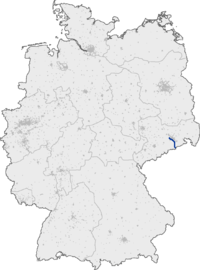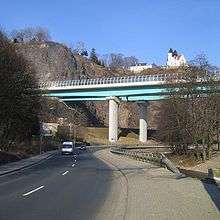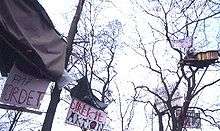Bundesautobahn 17
| ||||||||||||||||||||||||||||||||||||||||||||||||||||||||||||||||||||||||||||||||||||||||
|---|---|---|---|---|---|---|---|---|---|---|---|---|---|---|---|---|---|---|---|---|---|---|---|---|---|---|---|---|---|---|---|---|---|---|---|---|---|---|---|---|---|---|---|---|---|---|---|---|---|---|---|---|---|---|---|---|---|---|---|---|---|---|---|---|---|---|---|---|---|---|---|---|---|---|---|---|---|---|---|---|---|---|---|---|---|---|---|---|
| Bundesautobahn 17 | ||||||||||||||||||||||||||||||||||||||||||||||||||||||||||||||||||||||||||||||||||||||||
 | ||||||||||||||||||||||||||||||||||||||||||||||||||||||||||||||||||||||||||||||||||||||||
| Route information | ||||||||||||||||||||||||||||||||||||||||||||||||||||||||||||||||||||||||||||||||||||||||
| Length | 44.75 km (27.81 mi) | |||||||||||||||||||||||||||||||||||||||||||||||||||||||||||||||||||||||||||||||||||||||
| Major junctions | ||||||||||||||||||||||||||||||||||||||||||||||||||||||||||||||||||||||||||||||||||||||||
| North end | Dresden | |||||||||||||||||||||||||||||||||||||||||||||||||||||||||||||||||||||||||||||||||||||||
| ||||||||||||||||||||||||||||||||||||||||||||||||||||||||||||||||||||||||||||||||||||||||
| South end | Czech border | |||||||||||||||||||||||||||||||||||||||||||||||||||||||||||||||||||||||||||||||||||||||
| Location | ||||||||||||||||||||||||||||||||||||||||||||||||||||||||||||||||||||||||||||||||||||||||
| States | Saxony | |||||||||||||||||||||||||||||||||||||||||||||||||||||||||||||||||||||||||||||||||||||||
| Highway system | ||||||||||||||||||||||||||||||||||||||||||||||||||||||||||||||||||||||||||||||||||||||||
| ||||||||||||||||||||||||||||||||||||||||||||||||||||||||||||||||||||||||||||||||||||||||
Bundesautobahn 17 (translates from German as Federal Motorway 17, short form Autobahn 17, abbreviated as BAB 17 or A 17) is an autobahn in Saxony, south-eastern Germany. It links Dresden to the Czech border where the D8 continues to Prague. Construction began in 1998, and connects to the Prague (Czech Republic). The road is a fairly new contribution to the German autobahn-system, with its first stretch opened in 2001 and the last in 2006.
History

The first plans of the route were conceptualized as Strecke 72 in 1938, to connect Dresden and Prague. In Dresden, both a south-western variant, as well as the north-eastern variant over the Dresdener Heide and Pirna was planned. The later was decided in 1940, but there was no concrete work due to the war.
Based on the pre-war planning in the GDR by the end of 1960s, the connection to Prague was again envisaged. End of the 1970s, a southern route, similar to today, was decided. This project came about concrete planning, probably for cost reasons, but not beyond.
After the reunification, the German government decided that due to the increased truck traffic on the federal highway 170, construction becomes even more urgent. Building on the existing plans, various routes west of Dresden were designed, of which a relatively near-urban variant was adopted. The section from Pirna to the state border, however, was planned further to the west for reasons of landscape protection, as the original route would have touched the Saxon Switzerland National Park region.
The name A 17 was earmarked for another highway in the early 1990s. This federal highway 17 was to lead southeast from Bautzen to Zittau and on to the Czech Republic. There she would have had connection to the D 35. On this route, the federal highway 178 was realized in sections (federal highway 178n). In Zittau a triangle with the also not built Federal Highway 18 to Cottbus was provided. Today's A 17 to Prague should be run as part of the Federal Highway 13.
Against the construction of the highway formed after the turn of a network of several citizens' initiatives and environmental groups (including the Green League), while above all the Bundestag, the Federal Ministry of Transport and the Saxon cabinet, the project was pushed at the urging of the economy. A city-cutting variant of the A 17 was rejected by the Dresden City Council majority and repeatedly, as he feared, among other things, unacceptable noise and air pollution. Even the then mayor of Dresden Herbert Wagner (CDU) failed with his veto.
Then a citizens' initiative for the construction of the A 17 was founded, which initiated a referendum for the construction of the A 17 together with parts of the Dresden CDU-Stadtspitze. On November 5, 1995, about 50% of the Dresden electorate took part in this referendum. Of these, around 2/3 voted in favor of the construction of the city-cutting variant.
It goes through the environmental impact study, to prevent damage to the habitat during the construction of the expressway. The hills are not required to be flattened:
- the FFH area 37E Valleys of the United and Wilder Weisseritz,
- the "FFH area 179 Lockwitzgrund and Wilisch (compatibility with low-wing bridge, see above),
- the "FFH area 180 Meuschaer Höhe (compatibility by green bridge),
- the "FFH area 85E Seidewitztal and Börnersdorfer Bach (compatibility through arch bridge without supports in the valley bottom),
- the "FFH area 181 Bahrebachtal (Compatibility by slight circumvention) and
- the "FFH area 42E low mountain range around Oelsen (Compatibility through light environment and minimal contact) directly on the border with the Czech Republic.
The first part of first construction phase goes from Autobahndreieck Dresden-West (A 4) to junction Dresden-Gorbitz (B 173). This 3.6 km long route was built from August 1998, released on 8 October 2001 and cost about 53.6 million euros. The feeder to Dresden, the Coventrystraße (B 173), was expanded from March 2007 four-lane. A local bypass for Kesselsdorf in the course of the B 173 was under construction from 2009 to 2011. As a feeder to Freital the State Road 36 was relocated and expanded. The name "Coventrystraße" (B 173) is named after the British town, Coventry, formerly named Hermann-Matern-Straße, which is named after Hermann Matern, the SED minister and the honorary of Dresden.
The second part of first construction phase goes from the junction Dresden-Gorbitz (B 173) to Dresden-Südvorstadt (B 170). The 8.6 kilometer longo route cost $286 million Euros. 87% of the costs were accounted for by the tunnel-bridge tunnel construction over Plauenschen Grund and the Weisseritz between Dölzschen (Dölzschen tunnel) and Coschütz (Coschütz tunnel). Here, a meter of tunnel tube cost about 40,000 euros. The construction of this part started in the spring of 2000. Also on this part of the route is the tunnel Altfranken. The opening of this second section was postponed after a cable fire in the Coschütz tunnel from October 2004 to December 22, 2004. As early as autumn 2005, extensive repair work in the tunnels was necessary to eliminate construction defects.
The first part of the second construction phase goes from the junction (AS) Dresden-Südvorstadt (B 170) to Dresden-Prohlis. The three-kilometer route cost 45 million euros and was released on 25 October 2004, before the first phase of construction was completed. From the AS Dresden-Prohlis a new feeder to the then B 172 was built to relieve Kauscha and Dresden-Nickern from traffic. This bypass leads as S 191 over Goppeln and Rippien to the B 170 in Bannewitz (Hänichen).
The remaining portion of the second construction phase goes from the junction Dresden-Prohlis to Pirna is 9.9 kilometres long and was released in 22 July 2005. The construction costs amounted to 113 million euros. At the opening date, only the northern side of the Lockwitztal Bridge was completed. It was released on both sides on 13 December 2005. A feeder was built by the AS Heidenau, on the one hand to the B 172 and 2007 on the other hand between Borthen and Röhrsdorf and further in the direction of Wittgensdorf. The AS Pirna is located near Dohna, from where the B 172a was built four-lane to Pirna.
From the connection point, Pirna to the Czech border is 19.3 kilometers. The construction was officially started on December 8, 2004, and work on the bridges has been ongoing since the spring of 2004. He cost about 154 million euros. On December 21, 2006, the motorway from Dresden to the border and on the Czech side the continuation as D 8 to Ústí nad Labem for traffic was released.
Location

The A 17 is one of three autobahns that have one of their end points at the Bundesautobahn 4 near Dresden. The other two are the Bundesautobahn 13 at the northern Dresden autobahn triangle (Dresden – Berlin) and the Bundesautobahn 14 at the Nossen autobahn triangle (Dresden – Leipzig).
The A 17 begins at the western Dresden autobahn triangle, generally follows the edge of the city to the south, passing the towns of Heidenau and Pirna until it reaches the border between Germany and the Czech Republic at the Ore Mountains, where it ends. From there the D8 continues to Prague.
Features

Although the A 17 is only 45 km long, it has quite a lot of larger bridges and tunnels compared to other German autobahns. These are:
- The landscape tunnel, Tunnel Altfranken is located in the amount of Dresden-Altfranken. There, the motorway leads under the castle park ("Luckner Park") along. The biotope connection was built between 2000 and 2004 in open construction. At a length of 345 m, the underpass has two tubes with two lanes in the east and three in the west.
- The Dölzschener tunnel consists of two tubes and passes under the Dresdner district Dölzschen on 1070 m length. As it rises slightly to the west, the northern lane is three-lane, but has no hard shoulder. The tunnel was built in mining propulsion according to the "New Austrian Tunneling Method".
- The Coschützer Tunnel is the longest tunnel on the A 17 and passes under the Dresden district of Coschütz. The two tubes of the tunnel with two lanes each and a hard shoulder are 2332 m long. He too was built according to the "New Austrian Tunneling Method". The Coschütz tunnel is connected to the Dölzschen tunnel via the Weißeritztal bridge in Plauenschen Grund.
- The Lockwitztalbrücke is the longest bridge on the A 17 and the tallest bridge on the A 17. It is 723 meters long and spans the valley floor up to 64 meters above sea level on the southern outskirts of Dresden. The bridge has spans of up to 125 meters and is characterized by a new type of construction with bow-shaped inclined struts made of reinforced concrete. Thus it was achieved that out of consideration for a fauna-flora habitat in the valley the number of pillars could be limited to eight. In addition, the bridge has a curve radius of 2500 meters; the center of the district lies north of the bridge. It was completed in December 2005.
- The Seidewitzalbrücke spans the valley of the same name near Pirna over a length of 568 meters. With a span of 154 meters, it is the largest arched bridge in Saxony and has a height of up to 55 meters above ground. The massive arch in parabolic shape was erected in the guyed freestanding construction. The bridge was completed in 2006.
- The border crossing of the Highway 17 to the Czech Republic was called Breitenau-Krásný Les / Schönwald. It was located about 4.7 km from the actual border on the German side at Börnersdorf-Breitenau and was from the outset very simply equipped, as the construction was already foreseeable that the identity checks by the accession of the Czech Republic to the Schengen Agreement on 21 December 2007 - exactly one year after the opening of the border crossing - would be eliminated. The site of the border crossing was then converted into a parking lot. In addition, a German-Czech police center was opened in Petrovice / Peterswald.
- In the immediate vicinity of the border is the 282-meter-long Nasenbachtalbrücke, directly adjoining the 300-meter long landscape tunnel Harthe. The directly following, 412 meters long border bridge over the Schönwalder Bach was built by the Czech Republic and crosses the German-Czech border. The road on the Czech side on the slope of the 723 meter high Špičák (saddle mountain) reaches the highest point of the motorway connection at about 650 meters above sea level. Shortly after the start of the tunnel Panenská a few meters beyond the junction Petrovice also the Erzgebirge ridge water divide, a subordinate watershed between the catchment areas of the rivers opening in Bohemia and Saxony in the Elbe, under.
The designation of A 17 was originally given to a post-reunification Autobahn corridor planned to run from the A 4 near Bautzen to the Polish border at Zittau (actually very close to the German-Polish-Czech tripoint). Planning for this incarnation of the A 17 was shelved in the 1990s before any fixed route for this Autobahn was established, and the designation was given instead to the southernmost section (then being planned) of the A 13.
External links
- Bundesautobahn 17 – detailed route plan (in German)

